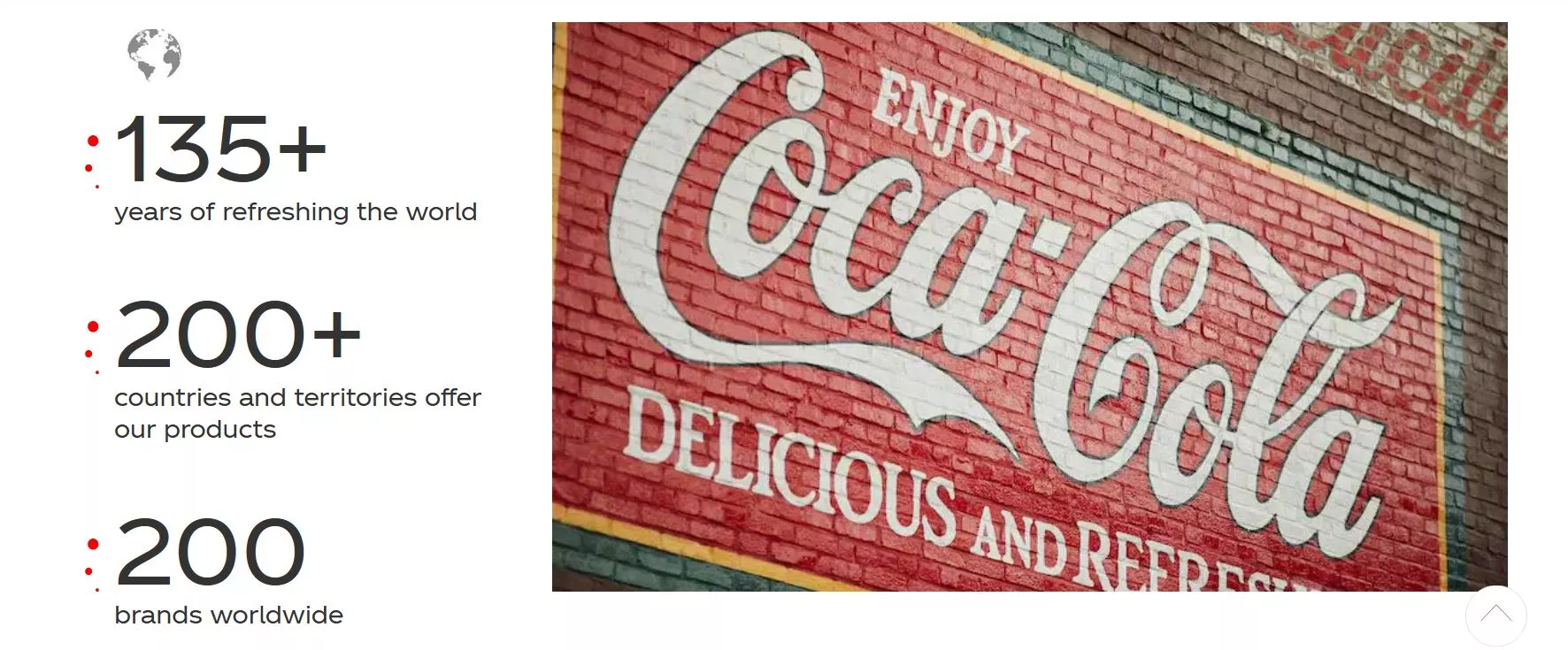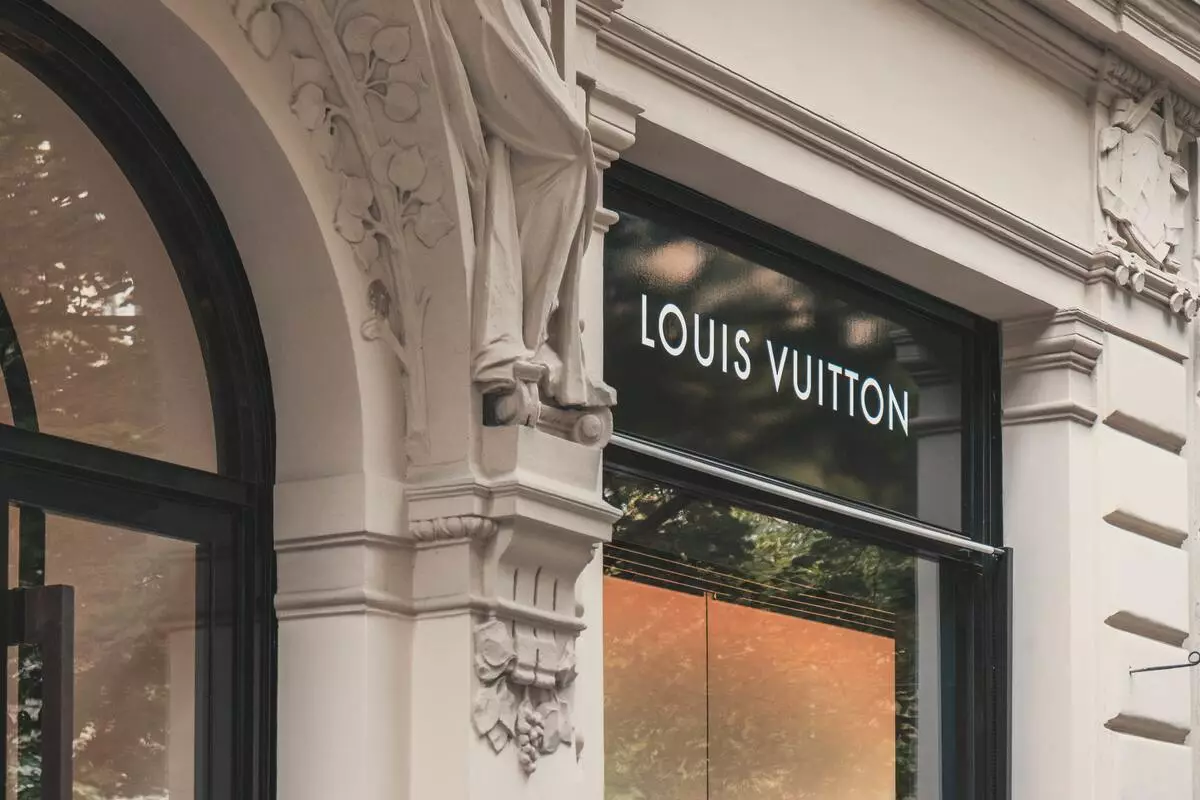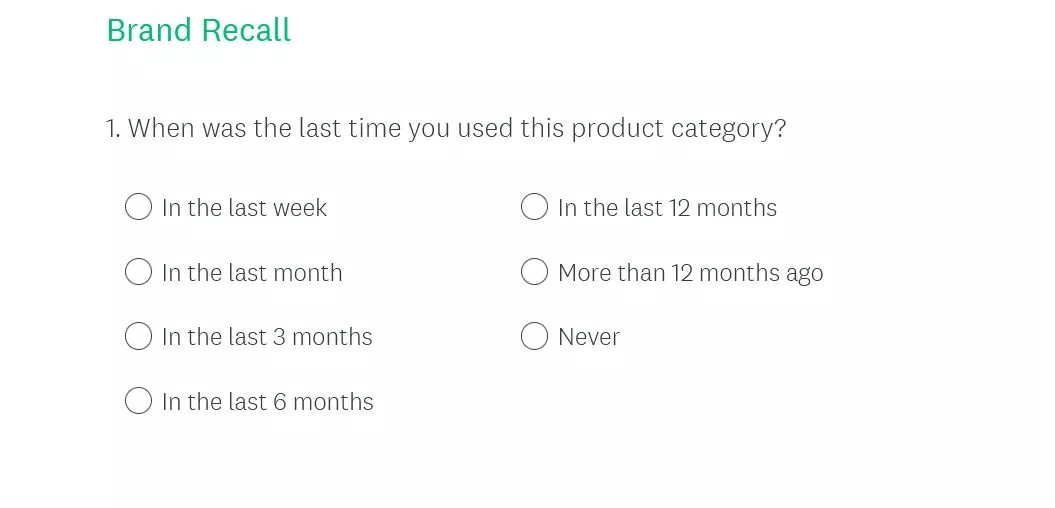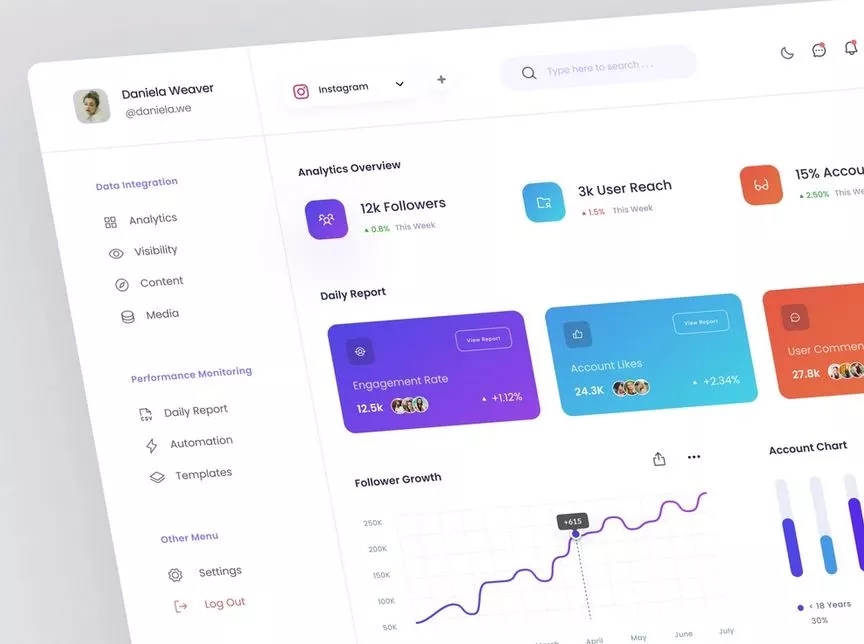Building a brand can be challenging for businesses, especially in a saturated market. Unless you have a branding expert by your side, branding beginners with zero know-how are left with a mishmash of ideas that lack coherence.
The likely result? Businesses fail before they even hit Year 1 - a common scenario that many encounters in a bid to succeed from the get-go. But much like building a house, you need a solid foundation for your brand to stand on before you can even think of your future milestones.
This brings us to the most crucial first step in your brand strategy: Conducting branding research.
Understanding Branding Research and Why You Need One
A sub-type of marketing research, brand research is the process of identifying, collecting, and interpreting data relating to your brand. It encompasses information about your consumers, competitive analysis, and growth opportunities that are broken down into smaller pieces and tracked over time.
Partnering with a brand strategy design agency can help translate these insights into actionable creative direction and cohesive brand systems that align your research with real-world execution. Moreover, it gives an overview of where your brand stands in the market. And it helps gauge your brand value and see if your branding strategies yield expected results.
Coca-cola was able to create a massive portfolio of over 200 brands while maintaining a solid global presence. To remain a brand leader in its category, Coca-cola makes sure that they are on top of challenges as they arise and has intimate knowledge of how its consumers feel about its brands—all with the aid of brand market research.

For instance, with a vast online following, the brand is keen on monitoring and collecting social media metrics results from different platforms. Concerns get solved on time, and the engagement level with its audience remains high.
While it is easy to chalk the success of big brands to an endless pool of resources for market research, startups and small businesses can successfully implement brand research, too, even on a small budget. All you need is a dash of creativity, knowing what to prioritize, and bulking up your knowledge on brand research.
5 Types of Brand Research to Consider
Brand research can take you in multiple directions depending on your branding research topics and marketing strategy. For instance, you may be curious if your branding campaigns are effective. You may also want to run brand identity research to zero in on how you want to present your brand to the public. While there is no one-size-fits-all brand research in marketing, below are the five types you may want to consider running.
1. Brand Awareness Research
Selling a product starts with creating a presence in the market or what is simply called brand awareness. It pertains to your market reach, figuring out if you are attracting your intended target audience. With a high-level awareness, consumers can make brand associations or easily connect colors, logos, or even the mere sight of your packaging to your brand.
Take McDonald’s, one of the most popular fast-food chains worldwide. When people—young and old—are presented with the iconic Golden Arches logo or even just a glimpse of Ronald McDonald’s striped socks, it’s hard to miss which brand these associate with. Or perhaps the sight of a half-eaten apple illustration already brings the tech giant Apple to mind. And this is something most brands aspire—to establish a strong brand recognition that can be easily identifiable without the need for introduction.

By conducting brand research, it can help you track the customer journey and how you rank in their minds vis a vis competing brands. It also fleshes out which branding elements are working and evokes instant recognition from your consumers.
For example, is your logo, packaging design, or brand tagline easy to remember? But beyond brand recall, it is vital to ensure that your audience knows what your brand stands for.
This brings us to brand image.
2. Brand Image Research
As the adage goes: The way you dress is an expression of your personality. And the same can be said about your brand. Hence, we witness big brands spending millions to avoid tarnishing their brand image or brand perception to the public.
Procter & Gamble (P&G) topped the list of advertisers in the world in 2021 with a staggering 8.1 billion branding investment. Gaining and maintaining trust is no easy feat, after all, and this couldn’t be stressed enough in a digital world where negative information can spread like wildfire.
With brand research in place, you can keep a pulse on what your consumers think of your brand and aids in measuring brand perception. It addresses some questions like:
- Are your creative visuals and other brand assets communicating the right brand personality to your audience?
- Is your brand still highly relatable and relevant to your audience?
- Do customers have positive feelings when they use your brand?
3. Brand Positioning Research
Data shows that there are over 500,000 brands worldwide. Narrowing that to per product category, you are probably competing with at least hundreds of other brands in your area. It makes standing out extra tricky, especially for small brands with limited resources. This is where brand positioning comes in handy.
A strong brand positioning means clearly defining your brand from your competitors in the mind of your consumers. It answers why they buy from you instead of others.
But to achieve this, you’ll need a deep knowledge of your market—target audience, competitors, industry demand, etc. —which you can gain through brand research. Done right, brands can improve their products and services, optimize their marketing research efforts, and zero in on their niche market.
4. Brand Loyalty Research
From the moment we wake up, we are exposed to thousands of ads on every channel imaginable—online and offline. The result? They usually fall on deaf ears, and some consumers are more likely to jump from one brand to another, making it difficult for businesses to establish brand loyalty.
As you navigate a fickle environment, brand research digs into what makes your consumers tick and pushes them to choose your brand over others. Are they buying from you because of your brand image, the quality of services and products you offer, or both? It also lets you glean opportunities for improvement promptly.
In effect, your brand becomes agile in delivering better products and services and branding initiatives at a fast pace. With a tight-knit community, you can then foster brand loyalty among your consumers.
5. Brand Equity Research
Capping our list of brand research types is brand equity or the tangible and intangible merits of a brand. It is the culmination of your brand image and brand awareness that distinguish it from its competitors. Brand equity also answers the question: Is your brand worth it?
With quantitative and qualitative methods, brand equity research can determine the financial valuation of your brand in the market and its profitability. For example, fashion brand H&M is valued at over USD12 billion. It can also track qualitative insights, like your consumer’s perception vis a vis the premium they pay for your brand.

Take luxury brands Louis Vuitton, Hermes, and Rolls Royce—some of the biggest names patronized by high-end consumers and aspired by everyone else. They have built immense value in the market that the consumers don’t think twice about their practical functionality.
Now that you are more familiar with the type of brand research available, which methodologies can you integrate to get answers?
Methods to Implement Brand Research
Focus Group Discussion
A Focus Group Discussion or FGD is when you invite a select few from your target audience—people who are likely to buy your products or services—to gain feedback. Think of it as a group interview where respondents share ideas. Therefore, the selection method is often the most crucial step to an FGD's success, ensuring you get unbiased information that can help you strategize.
During focus groups, moderators facilitate the discussions to uncover how the market perceives the brand and why people choose them over others. They can also ask for suggestions on what they think the brands need to improve for a better customer experience. And with a conducive environment that encourages idea sharing, you are more likely to get honest and comprehensive answers.
An FGD is advantageous to many, especially to companies with direct-to-customer relationships. One example would be beauty brands that have to produce highly tailored cosmetics—different skin types, shades, problems, etc. To meet the expectations of their buyers, the FGDs allow them to get to know them better, what catches their attention, and other decision influences.
Pro tip: An FGD can take a lot of time and effort to plan and execute. Avoid hiccups by running mock discussions to test interview questions—whether they are clearly understood and worded in the best way possible to encourage a detailed answer rather than a Yes or No.
Customer Surveys

A customer survey is a questionnaire or a set of questions that consumers can fill out in a jiff. By design, it prioritizes convenience and accessibility with short online surveys sent via email, shared as polls on social media, or as a website pop-up page, to name a few. Of course, you also have the old-fashioned surveys distributed in-store, too. Below are other types of customer surveys you can consider:
- Likert Scale: Respondents gauge their satisfaction rate on a sliding scale from “Very unsatisfied” to “Very satisfied.”
- Multiple-choice questions: Respondents are given options to select that best answers the question.
- Open-ended questions: This type of survey encourages respondents to express their opinion in a more detailed manner.
Done periodically, you can track how customer responses change according to their demands and how you fare compared to your competitors. It also identifies growth opportunities.
Pro tip: Sometimes, the people responsible for reaching out to respondents have the notion that the more participants, the better at the risk of forgoing the quality of the study. To increase your chances of success, it is best to focus on your target audience and survey goals to yield significant and insightful data.
Social Media Analysis

The advent of social media has opened up portals for brands to get to know their consumers better. With social media metrics in place, you can have definite answers on how you can provide a more personal brand experience. Consumers now have a platform to share their feedback and even help promote brands that impress them, too.
Social listening then becomes crucial for every brand. It entails keeping on the lookout for brand mentions, shared user-generated content (UGCs), and forum discussions—whether positive or negative feedback. You can conduct social listening on your website, too.

Among the brand research examples to learn from is Wonderbly, a company that publishes tailored books for adults and children. Catering to millions of customers worldwide, the brand still makes an effort to keep abreast with the competition.
One brand research strategy Wonderbly ran is to track who their demographics are on their website compared with other competing brands. Through careful data analysis, it was determined that there is a lack of exposure among its younger audience, especially among males. Thus, prompting the business to recalibrate its branding efforts.
Pro tip: Track your brand performance on social media with tools like Sprout Social, Hootsuite, and Buffer. These are social media management platforms equipped with features that allow you to schedule posts and monitor engagement across different social media channels in one dashboard.
Customer Feedback
When in doubt about how your brand is doing, it’s best to hear straight from the horse’s mouth. And this is exactly what customer feedback does with actual buyers providing reviews of your products and services.
For this reason, many brands are integrating feedback features on their social media pages, branded websites, and other platforms to improve their customer service. It makes customers feel heard, which can nurture relationships and ultimately build brand loyalty.
More importantly, honest feedback helps brands have a pulse on the market and make data-backed decisions. In return, brands are more likely to develop products their consumers will surely love.
Pro tip: Your sales team is the first in-person contact of consumers to your brand. They know your consumers by heart and can provide valuable insights as to what customers think of your brand
The Do’s and Don’ts of Brand Research
There is no single formula to perfect brand research strategy. Often, finding the right mix entails trial and error as you learn what types of methods fit your market and data needs.
1. Collect Data Periodically
There is always a new brand in the market that can threaten your market share. Consumers change over time, too. So how can you keep up with these changes?
Take advantage of the abundance of data available to you and ensure that periodic collection and analysis are done. in effect, you can pick up on any problems and provide innovative solutions before they cause real trouble for your business.
2. Quality Over Quantity
As a rule of thumb, you need to have at least 200 respondents to a survey to be statistically valid. But before you run out the door and share your surveys with random people, ensure that the people responsible for brand research distribution understand who you are targeting. Otherwise, you risk yielding data that can lead to wrong branding strategies.
3. Don’t Skimp On Your Research Spending
There are tons of free online digital tools to help start your brand research.
SurveyMonkey lets you create questionnaires in minutes, BrandMentions combes through the virtual world to track where people discuss or mention your brand, and Think With Google provides the latest marketing scoop about your brand using features like Consumer Journey, Market Finder, and Test My Site.
However, these free tools are usually limited and provide only high-brow information about your brand. Access in-depth and powerful information by investing into premium stack of tools. With better data, you can devise and implement effective strategies.
Moreover, equipping your brand with a highly-skilled team of data experts can make a huge difference in your branding approach. Data-driven marketing and branding strategies lead to higher customer acquisition, minimal expenses, and higher content engagement.
Level Up Your Branding with Strategic Brand Research
The importance of brand research cannot be stressed enough, especially in building the foundation of your business. As the first step to creating a perfect brand strategy, how well you do your brand research can set the tone for the path that your business will take towards growth.
Done right, you can reap a plethora of benefits like:
- Minimizing your brand’s risks;
- Understanding your consumers better and anticipating their needs;
- Decoding the competition, and
- Identifying areas for growth
Are these something you want to achieve for your brand? Talk to our team and get the guidance you need!
Sep 23, 2022
